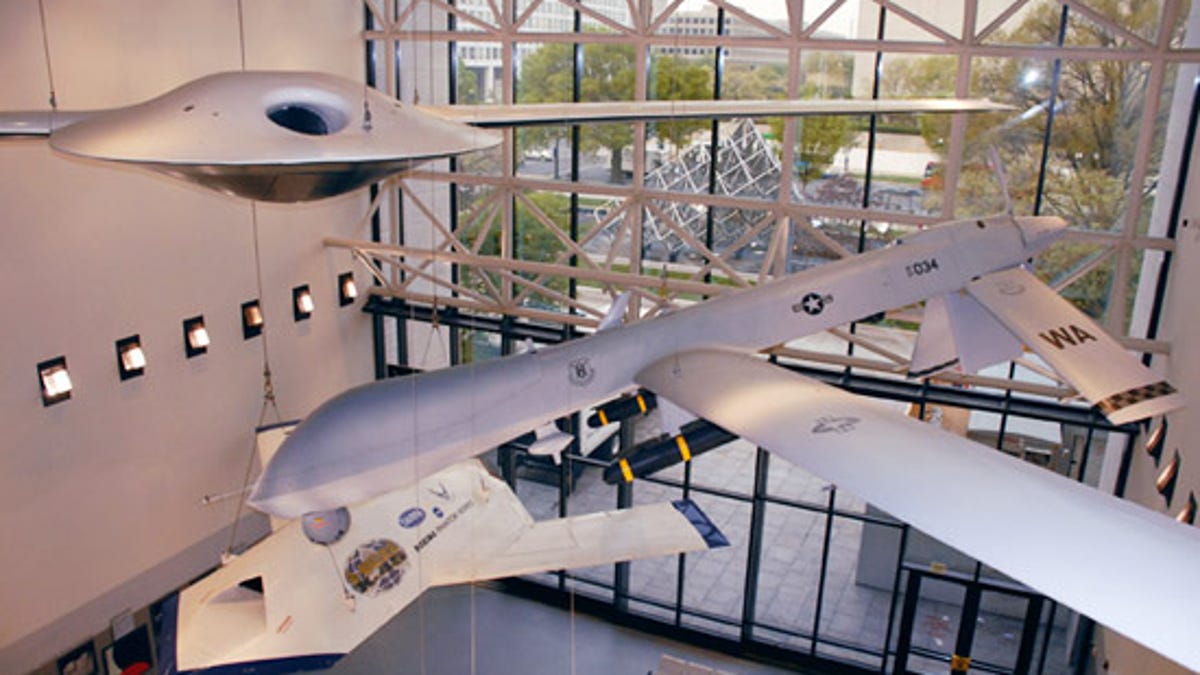Photos: Museum-quality military UAVs
In Washington, drone aircraft have found friends in high places, like Defense Secretary Robert Gates. Now they've also found a home in the Smithsonian Institution.

With names like Predator, Dragon Eye, and Darkstar, they sound downright intimidating. And it's true that in the hands of the Air Force, unmanned aerial vehicles like the Predator (and its grimly named younger sibling, the Reaper) can put you in a world of hurt via laser-guided Hellfire missiles.
But in a lot of ways still, UAVs aren't so far removed from the realm of the model airplane. The main reason: by and large, they're not autonomous, but rather fly under the control of a very human pilot on the ground--sometimes nearby, sometimes very far away. And some are small enough to hold in your hands; in fact, the 5-pound Dragon Eye used by the U.S. Marine Corps runs off a very modest electric motor and can be launched with a bungee cord.
One thing all the systems have in common is that they bring a new high-tech element to military operations, helping troops acquire ground targets, avoid roadside bombs, see beyond the next ridge, and even on occasion capture enemy combatants. (That would be the RQ-2A Pioneer in the 1991 Gulf War.)
In Washington, UAVs have already found friends in high places, like Defense Secretary Robert Gates. Now they've also found a home in the Smithsonian Institution's National Air and Space Museum. For more on that, and on the drones in places like Iraq and Afghanistan, see News.com's photo gallery, "Photos: UAVs land in the Smithsonian."

